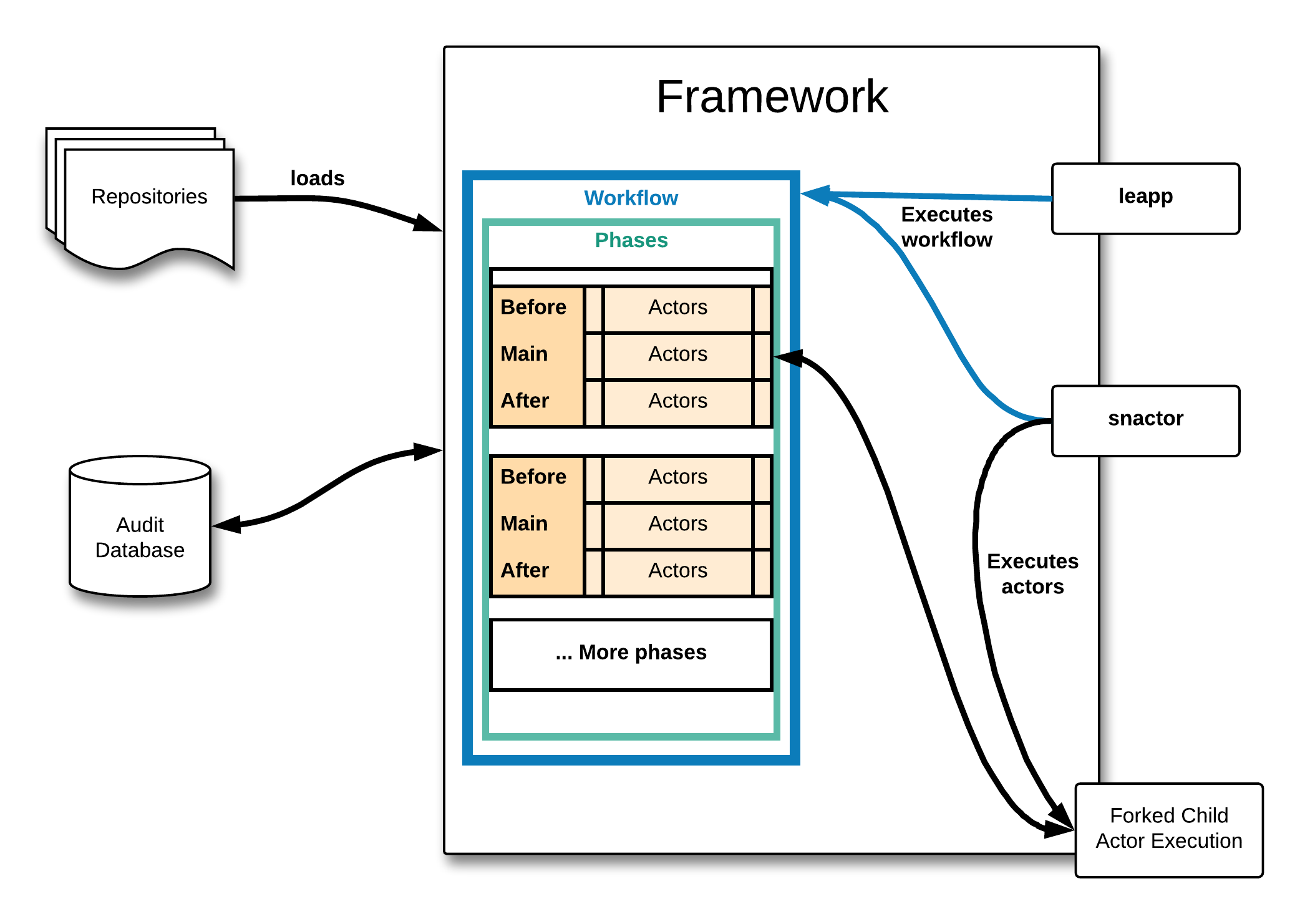Architecture overview¶
 Architecture overview
Architecture overview
There are two tools for working with the framework, the end user application leapp and the development utility snactor. The leapp tool is designed to run specific workflows, while the snactor tool can run arbitrary workflows, but also individual actors.
A workflow describes what work is going to be done and when. Each workflow is made of a sequence of phases, which contain actors split into three stages - before, main, and after. Workflows, actors, and all the parts necessary for the execution are loaded from repositories.
Each actor is executed in a forked child process to prevent the modification of the application state. All messages and logs produced by the actors are stored in the audit database.
For more information about each part of the architecture, check the terminology.
How is this different from Ansible?¶
Leapp is message-driven. The execution of actors is dependent on the data produced by other actors running before them. This data is passed around in the form of messages. This is in a contrast with Ansible where everything has to be specified up front.